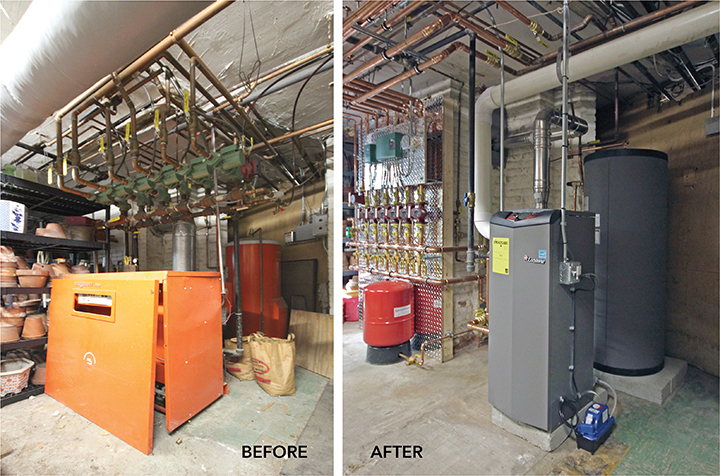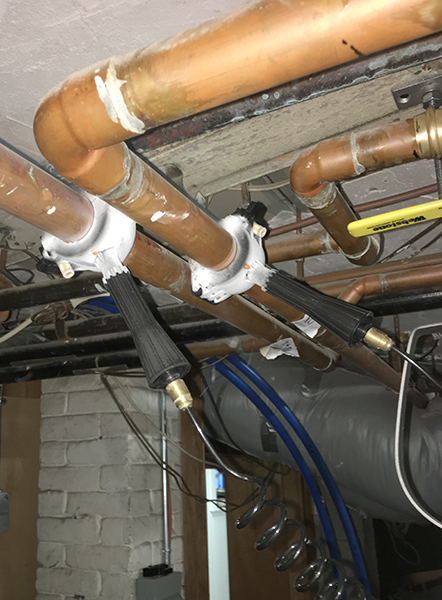Project Description
Replacement of HVAC Systems – Chestnut Hill, MA
Keyes North Atlantic (KNA) was hired by a general contractor to replace the HVAC systems in a 4,711- square-foot occupied house in Chestnut Hill, MA. The project involved the removal of the existing systems and components, and the installation of:
- New Boiler Plant: Lochinvar gas-fired floor-mounted boiler with a heating range of 19,900-195,000 BTUHs and an efficiency rating of 95%. Also included was new domestic hot water tank, all associated electrical work, circulator pumps, piping, a mixing valve which services the in-floor radiant heat and all other associated system components. The system then underwent a complete start-up and testing.
- New First Floor A/C System: Luxaire 4-ton, 16.25 SEER condensing unit and Luxaire 3.5-ton air handler. Also included was a new media-type return air filter installed in the air handler, modifications and reconnection to the existing supply and return air duct distribution system, a new thermostat and all associated electrical. The system was then pressure tested, evacuated and charged.
- Master Bedroom Split System: Mitsubishi 12,000 BTUH heat pump condensing unit and wall-mounted heat pump air handler. Also included was all necessary refrigeration piping and electrical, and a wireless wall-mounted thermostat. The system then underwent a complete start-up and testing.
After completing the installation of the above mentioned systems, the KNA project manager reviewed the installed systems’ eligibility and got the ball rolling for rebates from the manufacturers as well as energy efficiency rebates from MassSave, Massachusetts Clean Energy Center and GasNetworks.
*An area of note with this project is that the KNA team was able to work on the heating system without draining the liquid by using a pipe freezing process. This process involves using a tool that clamps to the pipe and allows for a chamber of liquid CO2 to flow into it. Once the liquid CO2 comes into contact with the outer wall of the pipe, the liquid inside the pipe freezes and a slug of ice is formed. This slug acts as a temporary valve that holds back the liquid allowing the pipe to be cut and tees or valves added. This process saves time by eliminating the standard need to drain the system then refill and purge the air from the pipes, and is especially convenient in commercial buildings where access to the entire piping system can be limited.



